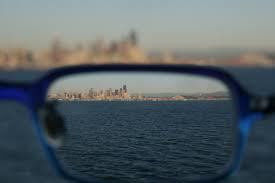 Astigmatism, otherwise known as a refractive error that effects how the eye focuses light, can often be misunderstood. Everyone is affected by this condition differently, some needing refractive surgery and others needing contacts or glasses. If you are experiencing squinting, headaches and eye strain you are experiencing common symptoms.
Astigmatism, otherwise known as a refractive error that effects how the eye focuses light, can often be misunderstood. Everyone is affected by this condition differently, some needing refractive surgery and others needing contacts or glasses. If you are experiencing squinting, headaches and eye strain you are experiencing common symptoms.
A normal shaped cornea can be compared to a baseball or basketball, but an eye that has astigmatism, can be more comparable to a football. The irregular cornea shape can cause vision distortion and blurriness. Astigmatisms may also occur due to keratoconus, because of the cornea thinning.
There are three types of astigmatisms:
• Hyperopia astigmatism
• Myopic astigmatism
• Mixed astigmatism
Astigmatism could affect both adults and children, so a yearly eye exam by your local eye doctor is very important. It can also be diagnosed with problems such as nearsightedness and farsightedness.
Below are some treatments and what to expect:
Glasses:
Glasses are a typical starting point for someone with astigmatism. Glasses can be used for many years without a change in your eye sight. However if you are diagnosed with an astigmatism it is wise to get an annual eye exam, or more frequent eye exam when you have changes in your vision.
Contact Lenses:
Some patients struggle with use of glasses and maintenance of glasses. However the contact lenses offer some comfort. The contact lenses can be used with a certain degree of astigmatism, however if the astigmatism gets worse other treatment options may be needed.
Vision Correction Surgery:
One of the refractive eye surgeries that can help those with astigmatism is LASIK. LASIK provide a person with an irregular cornea a clearer picture. This means that it can allow those who have an irregular shaped cornea a new smoother and more curved cornea. When the corneas shape is changed it allows the person a clearer image rather than a doubled or blurred view. It also can free someone from wearing glasses or contact lenses. While it doesn’t guarantee that you will not need glasses or contact lenses it can reduce some of the need for them.
Vision correction surgery is up to you and your eye care professionals. If you have more question about the treatments ask your doctor if it is right for you.


